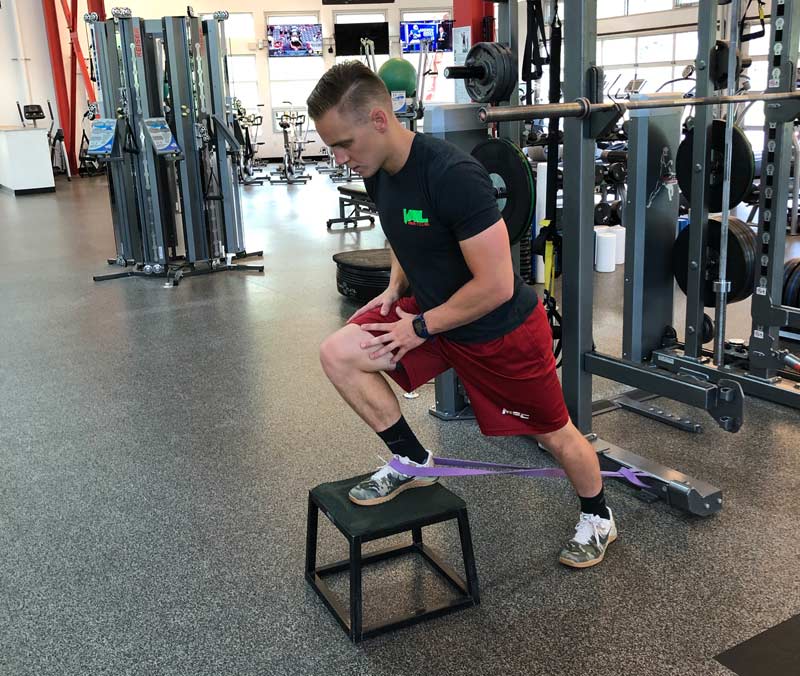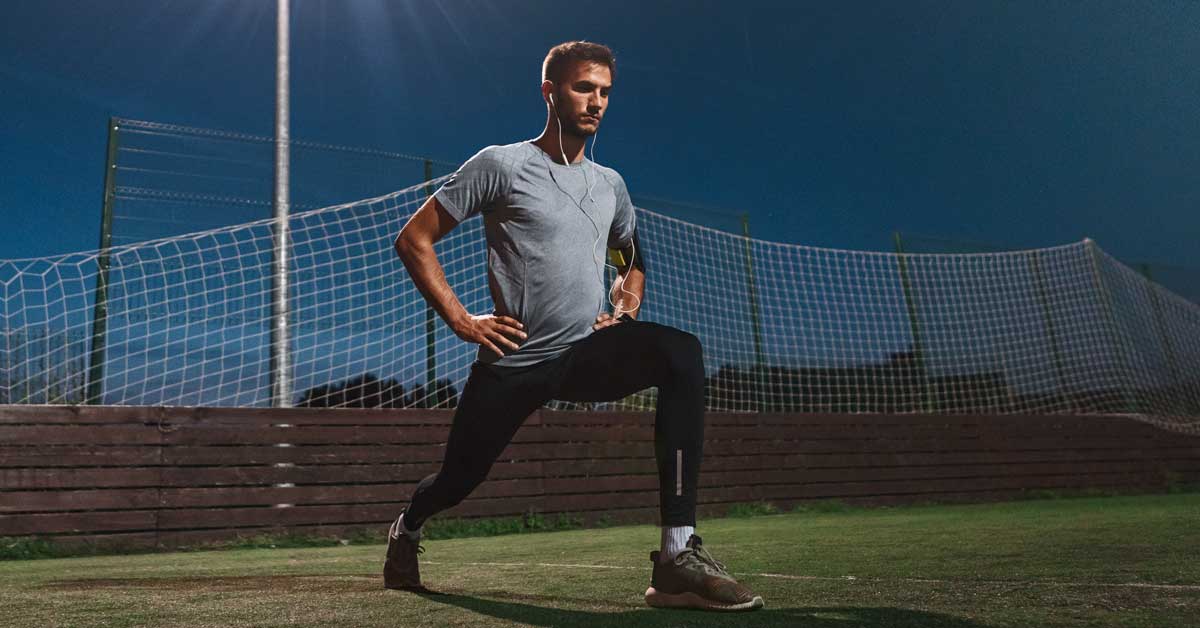Injuries are an unfortunate, yet naturally occurring, part of the competitive process in sporting activities. Ankles will roll, ACLs will tear, and shoulders will separate no matter what we do. These things happen, and yet countless “injury prevention programs” falsely claim that they have the answer to ensure nobody will suffer the unfortunate consequences competition can bring. Newsflash: If you truly want to ensure an athlete never gets injured again, tell them not to play the sport—otherwise, you have to accept that there are always inherent risks and do your best to reduce them.
Personally, I am a die-hard believer that in order to get your athletes to perform at a high level and remain healthy, they must get strong. Not everybody needs to squat 600 pounds, but they should be able to move through key movements (squatting, hinging, pressing, etc.) with adequate technique and eventually under load. When they can’t do these things, they are at a greater risk for injury.
When they can’t do these things is also when corrective exercise is of particular importance. Although it does assist in the injury reduction process, the greatest benefit of corrective exercises lies in keeping athletes well equipped to strength train properly (which is perhaps one of the best injury reduction tools of all). These exercises are critical to the safety and health of an athlete, which ultimately underpins their performance potential: A broken athlete will never succeed.
Although it does assist in the injury reduction process, the greatest benefit of corrective exercises lies in keeping athletes well equipped to strength train properly, says @jimmypritchard_. Share on XI know that a number of coaches will roll their eyes at the overly saturated “corrective exercise” niche market that has come to life today and balk at the idea of another movement screen predicting when and how their athletes will get injured. That is not the point I wish to debate. I wholeheartedly believe that there is no one-size-fits-all movement screen or particular way of correcting movement dysfunctions. I do, however, believe that corrective exercise is an integral piece of any successful training program aimed at attacking the weak points or deficiencies an athlete may have, so they can get back to what matters most: training.
If coaches take a proactive rather than reactive approach to addressing their athletes’ movement dysfunctions and inadequacies, they will find less time lost to nagging chronic injuries, coupled with greater performance outputs.
Where to Start
Selecting and implementing proper corrective exercises for the task at hand requires a coach’s eye and an understanding of how athletes may respond to any given movement. There are suggested frameworks from which we can find starting places with our athletes to begin correcting dysfunctional movement, but the key will always be to adjust on an individual “needs” basis. Identifying and prescribing these exercises is one thing but implementing them is another. Not only is it clear that corrective exercise is important, so too is the manner with which we implement it.
Eric D’Gati was the presenter/coach at the FMS level 2 course I attended four years ago, and he had one of the most useful perspectives I’ve ever heard a coach take regarding corrective exercise. He discussed it as an art, while the ability to implement it in a strength and conditioning program represents a true skill. We must be able to provide our athletes and clients with all of the appropriate exercises while improving their movement, but most importantly, addressing their goals!
Corrective exercise is simply a means to improve movement capabilities, thereby reducing the likelihood for injury and enhancing the toolbox of movements we can prescribe in a training program. Never—and I repeat, never—should a performance program turn into an exclusive corrective exercise program.
A football player who comes to us hoping to increase his 225-pound bench press for maximum reps and improve his 40-yard dash time for the NFL Combine needs a heavy dose of accelerative speed and strength endurance work. If the same athlete has a poor squatting pattern and hip mobility issues, we will surely address those—but in no way will we ever completely prioritize that over the goal of improving his needed performance qualities. What we would do instead is select exercises that we know he can safely execute to improve his targeted athletic qualities, while supplementing with corrective exercises.
One of the biggest mistakes I see coaches make when attempting to implement corrective exercise is allowing it to take precedence over the athlete’s goals despite their best intentions. Share on XOne of the biggest mistakes I see coaches make when attempting to implement corrective exercise is allowing it to take precedence over the athlete’s goals despite their best intentions. Coaches who do so will quickly discover that they no longer have clients to train, for they are not working toward their clients’ goals. Building performance and improving movement quality simultaneously is possible, and one could argue that by improving movement, we are also improving performance.
Implementation Strategies
Once coaches recognize the importance of corrective exercise in their programs, they often wonder how to effectively implement it without disrupting or detracting from the overarching themes of the program. While it may be a daunting task at first, incorporating these movements is quite easy and can be done in a multitude of ways.
1. Rest Intervals
One of my favorite methods of introducing a corrective exercise into a program is to have my athletes or clients do them between sets of compound strength and power exercises that require rest intervals.

If one of my athletes completes a heavy set of five front squats and also needs work on their ankle mobility, I will have them do their banded dorsiflexion stretches for the prescribed repetitions during their rest period. This kills two birds with one stone and is a huge help for athletes who already may be strapped for time but need to get multiple things in at once. Add in the fact that these exercises will likely enhance the performance of the intended movement we are training, and it becomes a clear no-brainer.
Video 1. Between sets of an exercise like a front squat, athletes can incorporate individualized corrective exercises.
2. Warm-Up
An obvious but effective time to implement corrective exercises is during the initial stages of the workout or during a warm-up. Most of these movements do not require a significant load, nor will they tax the athlete in any way that will harm their performance. If I have athletes who struggle with single-leg stability, but I know I’ve prescribed them some lower limb unilateral work for the day, I will often have them do hurdle work in their warm-up. In these exercises, they must step over and under hurdles while maintaining solid posture to get everything in the hips, knee, ankles, feet, and core firing properly.
3. Cooldown
Similar to the warm-up, the cooldown is another obvious place to implement corrective exercises because there is no fear this will detract from the remainder of the program. While I prefer to implement corrective exercises both intra-workout and in the warm-up as opposed to during the cooldown, I find this period an excellent opportunity to address any underlying mobility issues. During the cooldown, we can do extensive levels of static stretching in order to improve nagging areas that we need to address without the fear of it comprising our force-generating capacity, as we know that we certainly don’t want to do this before or during a workout.
4. Rest Day or Extra Mini Session
While I like to consolidate the work I prescribe my athletes as much as possible, one last method for implementing corrective exercise is through an extra session, planned either on a training day or a rest day. As previously mentioned, the load for the majority of these movements is rather insignificant in terms of stress, so it is highly unlikely that athletes will become fatigued from them. For that reason, a coach could execute an entire corrective exercise session on a rest day, or even as a second session at some point after the completion of their other regularly scheduled conditioning session.
This can be a particularly useful method when an athlete requires a significant amount of corrective exercise work and simply cannot fit it all into the main session without that dragging on too long. In that case, the athlete would benefit from a separate, shorter session focusing on correctives. For example, an athlete may struggle with core stability, bracing, and anti-rotation, so they may benefit from a circuit that includes exercises such as a half kneeling dowel lift.
Putting It All Together
Remember, in order to reduce injuries, athletes must be able to move effectively and train hard, building a solid anatomical foundation. Corrective exercise serves as a supplementary tool to assist with dysfunctional movement and ensure we address issues before they get out of hand. There are a multitude of ways to implement corrective exercises into a program, and a coach must develop the artistic form to insert them into their athlete’s program where they best see fit.
There are a multitude of ways to implement corrective exercises into a program, and a coach must develop the artistic form to insert them into their athlete’s program where they best see fit. Share on XCoaches should never compromise performance training programs in order to create exclusive corrective exercise programs; rather, they should use assessment tools to guide their exercise selections toward intelligent movements that their athletes can safely execute while attempting to concurrently improve their movement competency. If corrective exercise simply doesn’t seem “worth the squeeze” or appears too time-consuming, think about how much time will be wasted when an injury occurs. If coaches can take a proactive approach to their athletes’ movement ability (and dysfunctions) rather than a reactionary one, they will have a better chance of achieving continual progress and successful performance.
References
1. Cook, G. Movement: Functional Movement Systems: Screening, Assessment, Corrective Strategies. On Target Publications. 2010.
2. Patel, K. Corrective Exercise: A Practical Approach. Routledge. 2014.
3. Sherrington, C., Tiedemann, A., Fairhall, N., Close, J. C. T., and Lord, S. R. “Exercise to prevent falls in older adults: an updated meta-analysis and best practice recommendations. New South Wales Public Health Bulletin. 2011;22(3-4):78-83.






